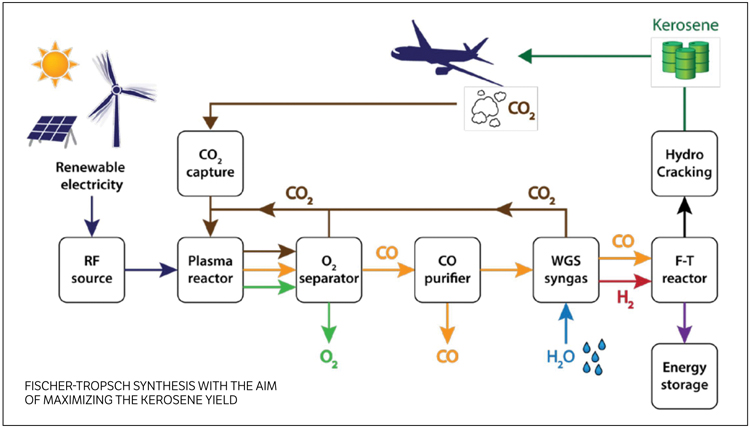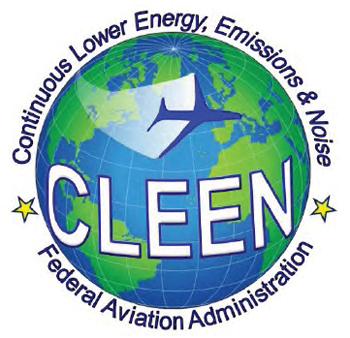INDIAN ARMED FORCES CHIEFS ON OUR RELENTLESS AND FOCUSED PUBLISHING EFFORTS

The insightful articles, inspiring narrations and analytical perspectives presented by the Editorial Team, establish an alluring connect with the reader. My compliments and best wishes to SP Guide Publications.

"Over the past 60 years, the growth of SP Guide Publications has mirrored the rising stature of Indian Navy. Its well-researched and informative magazines on Defence and Aerospace sector have served to shape an educated opinion of our military personnel, policy makers and the public alike. I wish SP's Publication team continued success, fair winds and following seas in all future endeavour!"

Since, its inception in 1964, SP Guide Publications has consistently demonstrated commitment to high-quality journalism in the aerospace and defence sectors, earning a well-deserved reputation as Asia's largest media house in this domain. I wish SP Guide Publications continued success in its pursuit of excellence.
- The layered Air Defence systems that worked superbly, the key element of Operation Sindoor
- Operation Sindoor | Day 2 DGMOs Briefing
- Operation Sindoor: Resolute yet Restrained
- India's Operation Sindoor Sends a Clear Message to Terror and the World – ‘ZERO TOLERANCE’
- Japan and India set forth a defence cooperation consultancy framework, talks on tank and jet engines
Lower Emission and Higher Flight Hours: A Necessity for Future
The aviation sector has recognised the need to minimise emissions to sustain air operations in the years to come

The world has now become conscious of the impact of global warming, Green House Gases (GHGs) and their impact on all life on earth. Global warming has been identified to be one of the primary causes of premature melting of snow resulting in rising sea levels and leading to inundation of coastal areas leading to flooding of nearby airports and human settlements. Consequently, the Kyoto Protocol had enunciated certain aspects to reduce emissions from various sources to arrest global warming. Though aviation was kept out of this Protocol, the International Civil Aviation Organisation (ICAO) has mandated the reduction of aviation-related emissions by at least two per cent per annum till the year 2020. This is a voluntary activity. Consequently, the Federal Aviation Administration (FAA) and the aircraft manufacturers embarked upon a responsible project to manufacture more fuel-efficient aircraft. They aspired to design lighter aircraft with better avionics that would consume sustainable fuels which would enable them to reduce emissions.
AIRCRAFT EMISSIONS
It is a well-known fact that the higher the speed of an aircraft and the longer it flies, the lesser fuel it consumes. Sub-sonic aircraft emit considerable amount of Carbon Dioxide (CO2), compounds of Sulphur (SOx) and Nitrogen (NOx) emissions. The ICAO propounds that ten per cent of the total emissions of an aircraft occur when it flies below 3,000 feet and that 90 per cent of the emissions take place in the upper reaches of the atmosphere. Moreover, below 3,000 feet during landing, takeoff and taxiing, the quantum of carbon dioxide increases to 30 per cent due to engine inefficiency.
As per the FAA predictions, the aviation sector is growing at 2.3 per cent globally and by the end of next two decades, it will increase by 58 per cent from the present levels. Aircraft contribute about three per cent of the total environmental pollution. As a result, there is a need to check pollution both in the air and on ground by bringing in more operational efficiency, finding sustainable economical fuel alternatives that provide the same degree of specific impulse per ml of fuel burnt visa-vis the current fuel. At the same time, there should be low emission norms.
The higher the speed of an aircraft and the longer it flies, the lesser fuel it consumes
Each aircraft emits small particulate matter or aerosols. The problem arises at the stratospheric level where these particles remain suspended for weeks and keep reacting with other compounds and become toxic. Their quantum increases along busy air routes and they start absorbing sunlight and water vapour producing acid rain, haze and disrupting the ozone layer. The haze causes cirrus cloud-like formation and rapidly changing weather which, over a period of time, alters the earth’s climate. Global warming reduces the lift capacity of aircraft. Hence, it is of utmost importance to minimise emission levels, so that air operations remain economically viable while sustaining the health and safety of humankind.

In the upper reaches of the atmosphere, the sulphur compounds interact with water to form sulphuric acid and when traces of ammonia react with them, ammonium sulphate particles are formed which can cause acid rain that can corrode aircraft bodies. The particulate emissions in stratosphere have a greater negative impact than ground pollution. The former floats to vast distances. They remain suspended for a long time and react with other compounds to form toxic substances and cause environmental degradation. Pollution through airport vehicles and aircraft when they are landing, taxiing and taking off, is affected by the weather, temperature, vegetation, the maritime effect and habitation. This pollution is predictable and remains fairly localised.
The reduction of aircraft emissions is easier said than done because it takes 10 to 20 years for a new aircraft design to be commercialised. Once it enters into service, a civil aircraft may have a lifespan of about 35 years, and upgrades are slow and costly.
Reduction in emissions depends primarily upon improving technology, reducing time the aircraft stays on the ground during multiple take-offs and landings, improving fuel quality by introducing sustainable bio-degradable fuels and through automated navigation-based operations in the air and on the ground to minimise fuel consumption.
APPROACHES TO EMISSIONS REDUCTION
Accordingly, a five-pronged approach is being undertaken by the FAA along with aircraft manufacturing industries in the American continent wherein the latter contribute more than 50 per cent for research and development funding for reducing emissions.

The first aspect of the approach is to correctly identify the actual quantum of emissions along global flight paths. This is followed by the identification and then designing of technologies that can reduce emissions and measure their impact through metrics. Air Traffic Management Modernisation is the second aspect through which the air traffic managers precisely know the location of the aircraft in the air and on the ground. Thus, through customised software, they can guide the aircraft to its cruising altitudes, design optimal flightpaths with time lines and follow it up by obtaining favourable landing slots, so that minimum fuel is consumed. This will minimise emissions and optimise flight expenditure. A good programme will ensure that an aircraft spends the minimum time on the ground taxiing or on door-todoor operations to board and de-board passengers. Thus, emissions due to engine idling are minimised. The optimisation of flightpaths as per the aircraft’s age and landing slot availability also minimises the fuel consumption and thus, its emissions too. This project is undertaken by FAA under its NextGen programme.
The third aspect includes the introduction of new aircraft designs and technologies under the FAA’s Continuous Lower Energy, Emissions and Noise (CLEEN) – I, II programmes. Some aspects under these programmes include the reduction of the dead weight of an aircraft by replacing its aluminum body with fibre-impregnated plastics to provide better aerodynamics. This reduces the drag, operating costs and emissions through fuel savings. Aircraft designers are trying to get lighter onboard batteries which provide power for longer periods than the conventional ones. The avionics too are being miniaturised using electronics and communication engineering aspects such as internet of things and machine learning. All these aspects reduce fuel consumption and the resultant emissions but they have to be safe too.
The reduction of aircraft emissions is easier said than done because it takes 10 to 20 years for a new aircraft design to be commercialised
The introduction of sustainable alternative fuels is the fourth aspect of particulate emission reduction being developed. Synthesised Iso-Paraffins jet fuel is developed from fermented sugars. The Fischer Tropsch jet fuel is extracted from hydrocarbons such as biomass, coal and natural gas. The Hydro-processed Esters and Fatty Acid jet fuels are made from plant oils and greases. Trials are underway to examine these fuels for safety, bio-degradability, specific impulse and emissions.
The fifth aspect is the implementation of these technologies in trade. All these technological developments are capital intensive to induct. Hence, they can be only integrated in trade by a combination of promulgation of governmental policies, legislations on environmental standards, industry participation in actual research and development, availability of funds from investors to absorb this technology and the establishment of standards which are propagated through regulations.
ENHANCED FLIGHT HOURS
The International Civil Aviation Organisation (ICAO) aims to reduce emissions in the year 2022 to those of the year 2005. It also endeavours to have a net emission reduction by the year 2050.
As per the ICAO, an aircraft consumes 100 per cent power during takeoff, 85 per cent during climbing, 30 per cent during descent and seven per cent during taxiing. It can be seen that bulk of the energy is consumed while the aircraft is below 3,000 feet. Moreover, the engine in this air zone is not providing optimal fuel burn, thus leading to poor specific impulse. This is what needs to be optimised by reducing multiple hops for refueling. In order to minimise emissions, the passenger’s itineraries too need to be planned as direct point-to-point flights to help overcome the above challenges.
When the aircraft flies at its cruising speed, its noise, fuel burn and emission levels are minimal. Hence, now the time has come to minimise aircraft emissions and maximise flying hours through single-leg, longhaul journeys to ensure the sustainable and safe growth of aviation.
CONCLUSION
The aviation sector has recognised the need to minimise emissions to sustain air operations in the years to come. This sector has accepted the need to measure emissions and to develop metrics to measure its reduction. The aviation industry is improving the aircraft technology to minimise fuel consumption, as also exploring bio-degradable fuels to curb emissions in a sustainable and safe way. Various governments too have joined hands to usher in regulations to help absorb better technology apart from providing funding for the same. Owing to the inefficient burning of fuel below 3,000 feet, there arises the need to have long haul, point-to-point flights to minimise the emission footprints. All these aspects lead to reduction of emissions and facilitate in making modern day air travel sustainable and comfortable.





